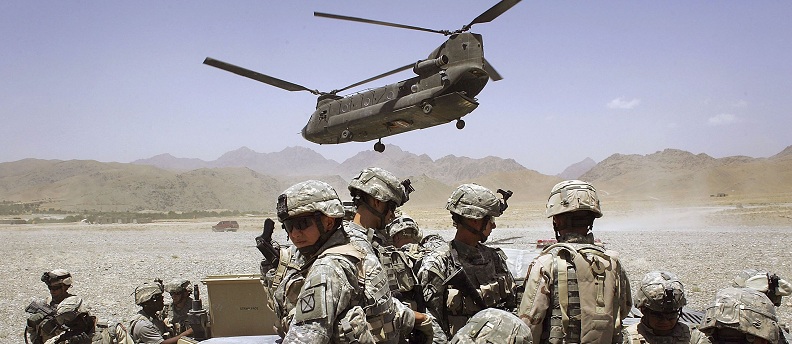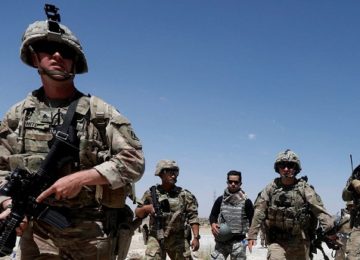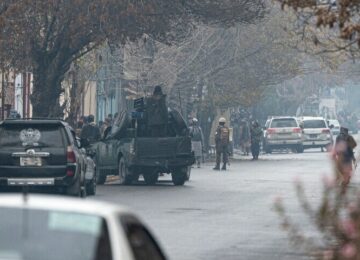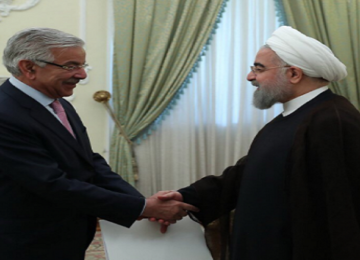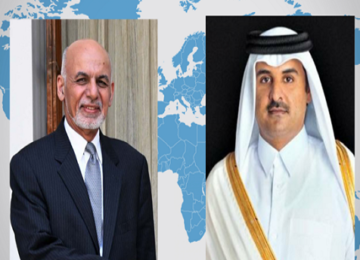In the past decade and a half US spending in Afghanistan has reached unprecedented levels – with Al-Jazeera quoting a figure just over $700bn and Brown University quoting close to $800bn – in support of Afghan governments, building infrastructure and spending on army. However, widespread corruption and poor monitoring by US on ground have not led to a good result card. In spite of this massive spending 54% of the Afghan territory is under the control of Taliban.
A quarterly report by the Special Inspector General for Afghanistan Reconstruction (SIGAR) states that “the estimated value of opium and its by-products produced in Afghanistan increased to $3.02bn in 2016 from $1.56bn in 2015.” The surge in Afghanistan produced opium is 43% in 2016. The US has failed to curb the increasing production and trade in opium. To the contrary, in Garmsir district government has imposed a tax on opium production to bolster local government’s earnings much as Taliban have imposed on production of opium in lands under their control.
Reportedly, Afghan officials are directly involved in this competition for greater revenue with US army personnel sucked into supporting the government functionaries. “There are phases of government complicity, starting with accommodation of the farmers and then on to cooperation with them,” said David Mansfield, a researcher who conducted more than 15 years of fieldwork on Afghan opium. (NYT Feb. 16, 2016)
The farmers growing opium do so out of utter desperation to earn a decent livelihood. The US, in the much touted objective of ‘nation building’ in Afghanistan, has failed to offer alternate production options to these farmers.
Not only the production of opium and its sale in Taliban controlled lands funds terrorism, those produced on government owned lands provides opium using a complex channel from the poor farmer producing it to its supply in both wholesale and retail markets in western countries. This hierarchy of prices is acknowledged by the US administration:
“Afghan heroin sells on the international narcotics market for 100 times the price farmers get for their opium right out of the field”. (US State Department quoted by the Voice of America (VOA), 27 February 2004). The heroin business is not “filling the coffers of the Taliban” as claimed by US government and the international community: quite the opposite! The proceeds of this illegal trade are the source of wealth formation, largely reaped by powerful business/criminal interests within the Western countries. These interests are sustained by US foreign policy. (Quoting research by Prof Michel Chossudovsky: June 14, 2005)
The US had excluded countries like China, Russia, Turkey and Iran in peace building process all these years post 9/11. Her own policy has been based more on discussing the past failures in bringing peace to the war torn country rather than focusing on what steps must be taken that were excluded from the equation before demanding harshly an answer from Pakistan which is only one variable of the matrix.
According to NYT, Trump is drawn to “Afghanistan’s vast mineral wealth, which his advisers and Afghan officials have told him could be profitably extracted by Western companies. To explore the possibilities, the White House is considering sending an envoy to Afghanistan to meet with mining officials. Last week, as the White House fell into an increasingly fractious debate over Afghanistan policy, three of Mr. Trump’s senior aides met with a chemical executive, Michael N. Silver, to discuss the potential for extracting rare-earth minerals. Mr. Silver’s firm, American Elements, specializes in these minerals, which are used in a range of high-tech products.”(July 25, 2017). This, he feels, can be a reason to stay engaged in Afghanistan, reportedly.
According to a report by Stockholm International Peace Research Institute (SIPRI), the US is among the top five major countries of the world producing and supplying arms to other nations. US heads the top five with a 9.9$ billion worth of sales according to SIPRI. Reportedly according to a Pentagon’s Foreign Military Sales program, the US State department approved of possible sale of grenade launchers, rifles and machine guns to Afghanistan as per Defense Security Cooperation Agency’s press release on August 18, 2016. It was in 2002 that the US allowed US arms companies to sell both military equipment and arms to Afghanistan.
The US needs to stop mixing business with peace attainment goal in Afghanistan. The cross mix of both the objectives are conflicting in nature. With this conflict comes failure at nation building and back fires upon efforts to eradicate terrorism at grassroots levels. Or, once having achieved these goals, to implement an exit strategy from Afghanistan.
Yes, Afghans want peace but owing to issues at grassroots they fear an outbreak of a bloody civil war if the US and NATO forces exit. Without a practical and doable plan for peace, Afghanistan will likely descend into worst chaos. This fear after nearly 16 years of presence on ground of foreign troops makes for a poor result card for the invaders!
The writer is a lawyer, academic and political analyst. She has authored a book titled ‘A Comparative Analysis of Media & Media Laws in Pakistan.’ She can be contacted at: yasmeenali62@gmail.com and tweets at @yasmeen_9
© Center for Research and Security Studies (CRSS) and Afghan Studies Center (ASC), Islamabad.



